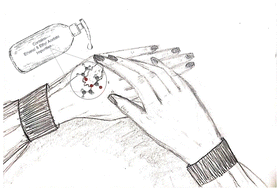How impurities responsible for recalls emerge in hand sanitizers†
Abstract
The recent global pandemic created an unprecedented demand for alcohol-based hand sanitizers. This stimulated the entry of many new producers into the market, both to provide an alternative income stream during the initial lockdowns, and to meet the needs of a society suddenly using far more sanitizer than was available due to production and transport interruptions. Similarly, this created a need for alcohol sources well beyond what had been produced for the consumer market. This has led to numerous recalls of formulations in both the United States and Canada for exceeding the limits of several key impurities, generally oxidized derivatives of ethanol, that could risk consumers' health. Some of these recalls likely arise from the use of substandard ingredients, but others are less easily explained. We hypothesized that the inclusion of hydrogen peroxide, and the possible introduction of metal salts from processing could explain the levels of oxidative impurities. This study investigates these questions experimentally using the standard WHO formula as the base formulation and finds that these proscribed impurities readily arise in the presence of metal salts and an oxidizing agent.



 Please wait while we load your content...
Please wait while we load your content...